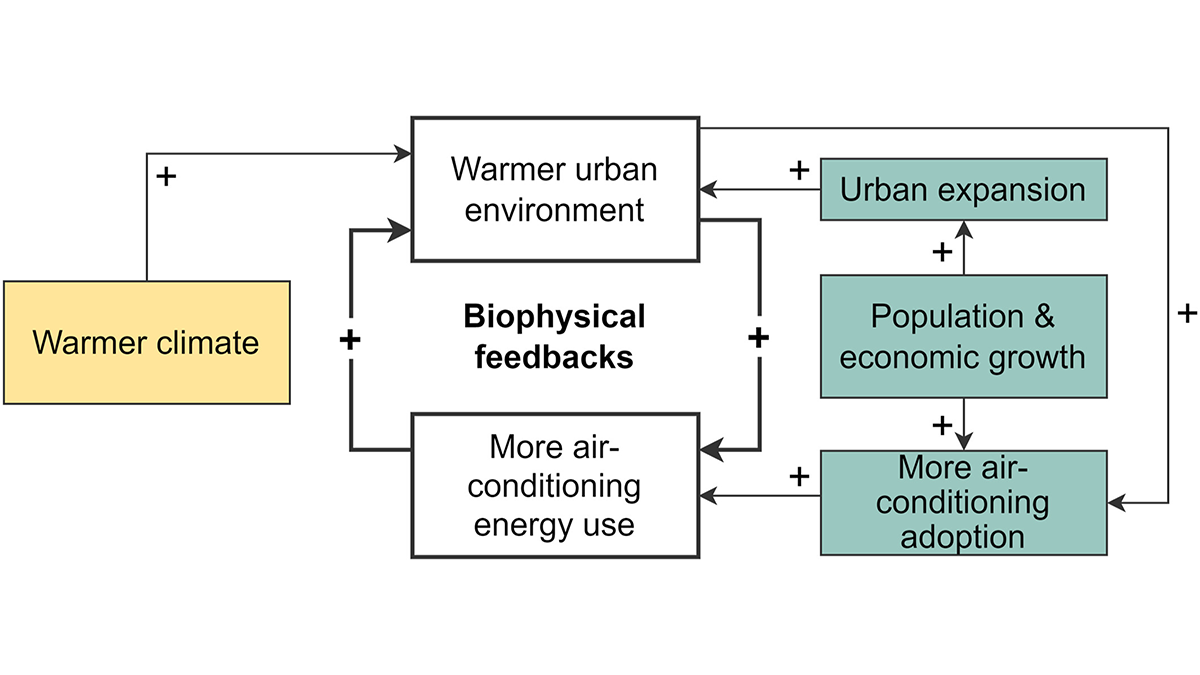Editors’ Highlights are summaries of recent papers by AGU’s journal editors.
Source: Journal of Advances in Modeling Earth Systems
Future urban energy demand projections are subject to considerable uncertainty brought upon by climate change, socioeconomic development, and our adaptation to climate change. Existing tools have not been able to fully capture the global-to-local scale interactions between climate change and energy use (see figure above) which harms our climate preparedness and action.
Li et al. [2024] develop an explicit air-conditioning (AC) adoption scheme in the Community Earth System Model (CESM) and a first-of-its-kind global AC adoption rate data set to address this research gap. These developments significantly improve CESM’s ability to model urban AC energy demand. More importantly, the new scheme facilitates more robust projections of future urban energy demand and enables global-scale experiments on the effects of increasing AC adoption rate that reveal the inter-regional differences in urban energy-climate interactions.
Although these developments are implemented in CESM, the concept, mathematical model, and the data set could be adapted to other ESMs. This work is a leading effort in representing urban, energy, and human dynamics in global-scale models.
Citation: Li, X. “C.”, Zhao, L., Oleson, K., Zhou, Y., Qin, Y., Zhang, K., & Fang, B. (2024). Enhancing urban climate-energy modeling in the Community Earth System Model (CESM) through explicit representation of urban air-conditioning adoption. Journal of Advances in Modeling Earth Systems, 16, e2023MS004107. https://doi.org/10.1029/2023MS004107
—Jiwen Fan, Editor, JAMES


